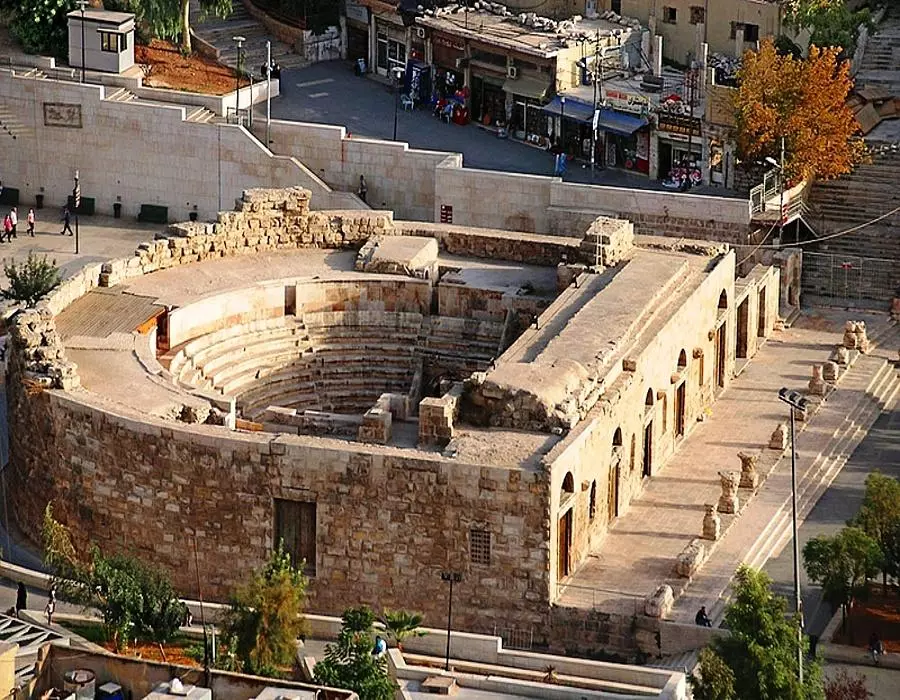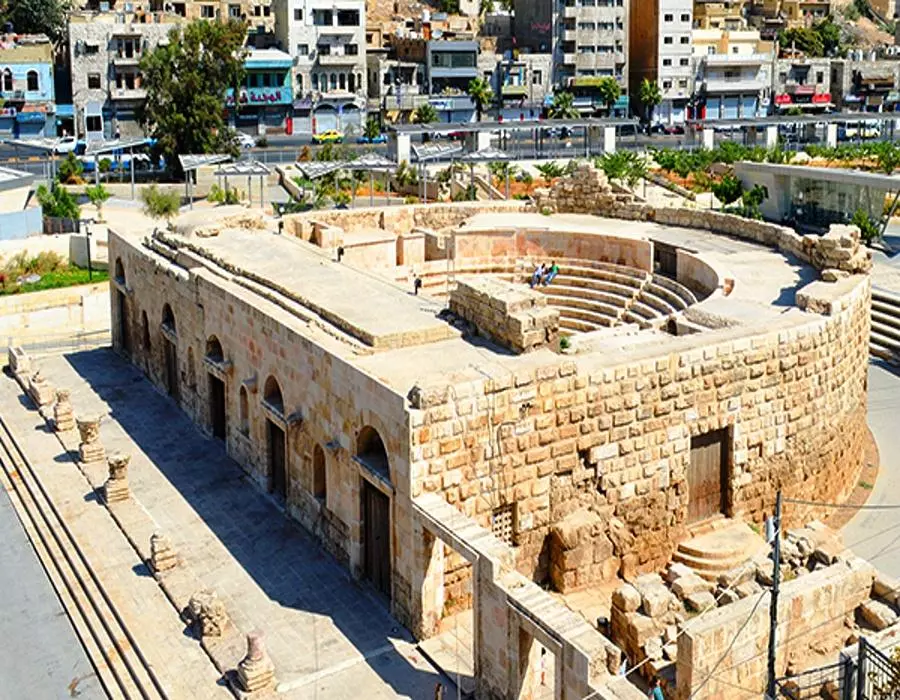The lowest nature reserve on earth !
Odeon Theater Amman
The Odeon Theater in Amman, Jordan, is a small yet historically significant Roman amphitheater dating back to the 2nd century AD. Located near the larger Roman Theater in downtown Amman, this semi-circular structure could accommodate around 500 spectators and was primarily used for musical performances and poetry readings. Featuring classic Roman architectural elements, including tiered seating and a stage area, the Odeon reflects the rich cultural heritage of ancient Philadelphia (modern-day Amman). Today, it remains an important archaeological site and a venue for cultural events, offering visitors a glimpse into Jordan’s vibrant past.
The Odeon Theater in Amman dates back to the 2nd century AD, during the Roman rule of Philadelphia (the ancient name of Amman). It was built as a small performance venue, likely used for musical concerts, poetry recitals, and public gatherings. The theater could accommodate around 500 spectators and was part of a larger complex that included the Roman Theater and the Forum, which served as the city’s cultural and social center.
Constructed in the traditional Roman architectural style, the Odeon features semi-circular seating (cavea) and a stage (orchestra), with a design that suggests it may have been covered with a wooden or fabric roof to enhance acoustics and provide shelter. It was likely commissioned during the reign of Emperor Antoninus Pius (138–161 AD) or Emperor Marcus Aurelius (161–180 AD), when Philadelphia was thriving as a provincial city.
Over the centuries, the Odeon suffered from natural disasters and urban development, leading to its deterioration. However, extensive restoration efforts in the 20th century helped preserve its structure, allowing it to serve as a venue for modern cultural events and performances. Today, the Odeon Theater stands as a reminder of Amman’s rich Roman heritage, attracting tourists and history enthusiasts alike.


The Odeon Theater in Amman holds great historical and cultural significance as a well-preserved example of Roman architecture in Jordan. Built in the 2nd century AD, it reflects the artistic and social vibrancy of ancient Philadelphia (modern-day Amman), where music, poetry, and public gatherings played a key role in daily life. Its intimate design and probable roofed structure suggest it was primarily used for acoustic performances, setting it apart from the larger Roman Theater nearby.
Beyond its architectural value, the Odeon remains significant as a link between the past and present, serving as a venue for modern cultural events, concerts, and festivals. Its restoration has helped preserve Amman’s Roman heritage, allowing visitors to experience a tangible connection to the city’s ancient history. As part of a larger archaeological complex, including the Roman Theater and Forum, the Odeon contributes to our understanding of urban planning and entertainment in the Roman era, making it an essential landmark in Jordan’s historical landscape.
Odeon Theater Amman: A Historic Gem in the Heart of Jordan
Nestled in the heart of Amman, Jordan, the Odeon Theater stands as a testament to the city’s rich Roman heritage. Dating back to the 2nd century AD, this small yet significant amphitheater was primarily used for musical performances and poetry recitals, offering an intimate cultural experience in ancient Philadelphia—the Roman name for Amman.
With a capacity of around 500 spectators, the Odeon was likely covered with a wooden or fabric roof to enhance acoustics, distinguishing it from the nearby Roman Theater, which served larger audiences. Together with the Forum, these structures formed the cultural and social hub of the city during the Roman era.
Despite centuries of wear and natural decay, the Odeon has undergone extensive restoration, allowing it to continue serving as a venue for modern cultural events, concerts, and festivals. Today, it remains an iconic landmark, inviting visitors to step back in time and experience the enduring legacy of Amman’s ancient artistic and architectural splendor.
